
- Home
- CALENDAR of Shows & Events
- Education Resources
- Eclipses
- Citizen CATE Experiment
- Eclipse Activities
- Eclipse Animations
- Eclipse Equipment
- Eclipse Graphics
- Eclipse Media Coverage
- Eclipse Resources
- Eclipse Show "TOTALITY!"
- Eclipse Timeline
- Eclipse Training
- Lunar Eclipse FAQ
- Solar Eclipse FAQ
- Safe Eclipse Observing
- TicTacToe Game
- Past Eclipses
- Eclipse 2024
- Eclipse 2017
- May 26, 2021 [Total]
- June 10, 2021 [Annular]
- Mars
- Moon
- Apollo Anniversary
- Apollo Animations
- Artemis Animations
- Sundials
- Video Lectures
- Mailing Lists
- Outreach Programs
- Citizen CATE Experiment
- HEAT
- Software Training
- Current
- MMS Outreach
- Reach For The Stars! Festival
- 2025 Festival Info
- RFTS Exhibitors
- RFTS Archive
- Rice / HMNS Partnership "Firsts"
- Rice Campus Observatory
- W5YG - Ham Radio Club
- Previous
- CLUSTER Outreach
- CUWiP Meeting 2017
- Future Space
- IAO
- IMAGE Outreach
- Programs for Teachers
- MST Program
- Space Weather
- Space Weather : Forecast
- Space Weather : Realtime
- Space Weather : Resources
- Space Science at Rice
- SPAC Alumni
- Rice Physics & Astronomy
- Rice Space Institute
Contact Information
Dr. Patricia Reiff | reiff@rice.edu
(713) 348-4634
Rice Space Institute, MS-108
Rice University
6100 Main Street
Houston, TX 77005-1892
Eclipse 2017 Resources
- Download How to View the 2017 Solar Eclipse Safely [1.8 MB PDF]
- Eclipse 2017 : NASA.gov - NASA's main site for the 2017 eclipse
- All-American Total Solar Eclipse : NSTA.org - A free PDF booklet about the 2017 eclipse and how to observe it safely
- Eclipse 2017 : Astronomical Society of the Pacific - A resource guide to eclipses and eclipse 2017
- Eclipse2017.org - large Eclipse 2017 resource site maintained by Dan McGlaun
- Interactive Google Map of the eclipse at your location (NOTE: uses UT!)
- Astronomy Society Of The Pacific (ASP) eclipse page
- American Astronomical Society (AAS) eclipse page
- Safe Solar Observing for the August 21, 2017 Total Solar Eclipse - Poster PDF by Patricia Reiff and Antoun Daou, Rice University; Kelly Bird, Kempner High School
- STAR•net - Science Technology Activities & Resources For Libraries Get your FREE 2017 Solar Eclipse Guide
- Reputable Vendors of Solar Filters & Viewers provided by the American Astronomical Society
Images
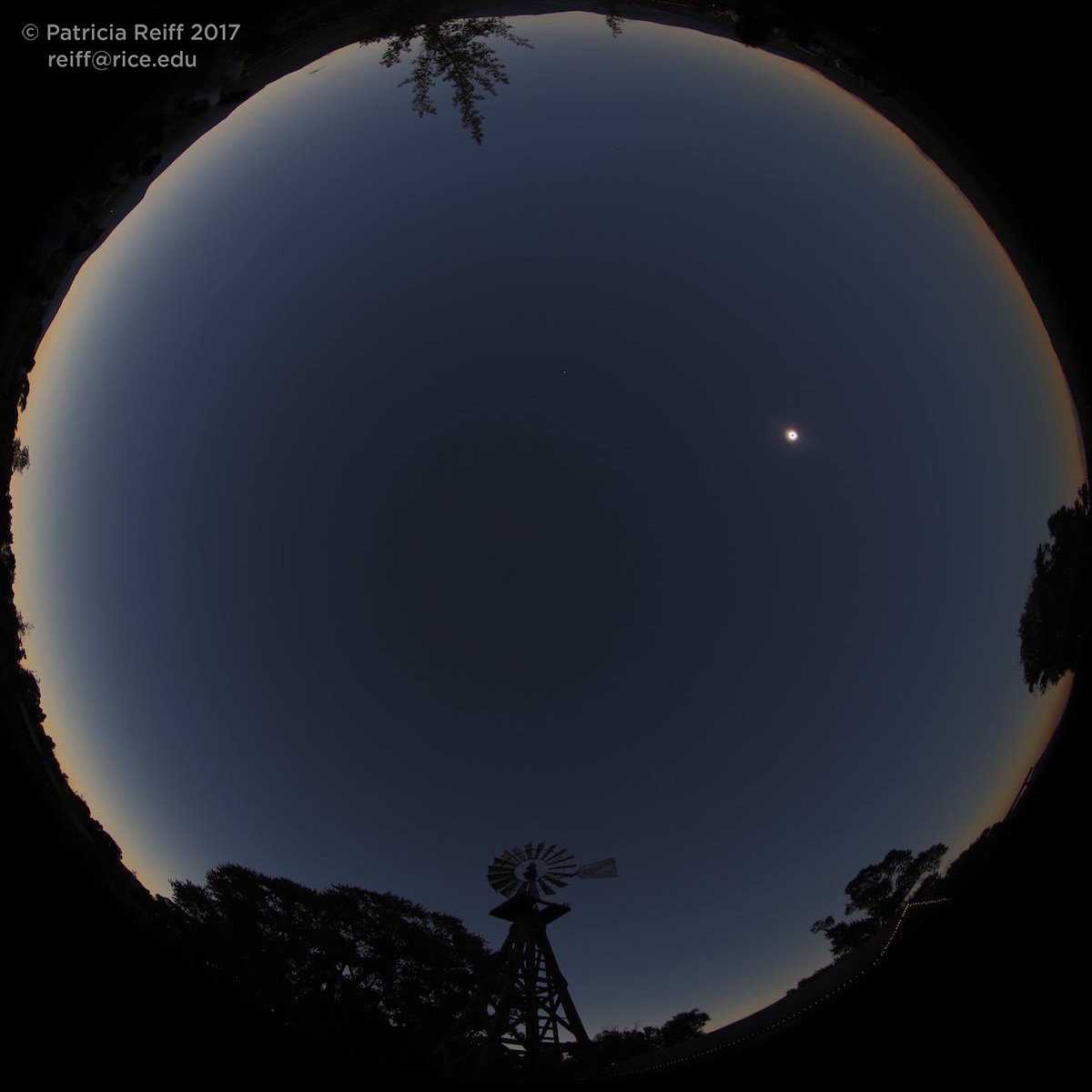 Fisheye of the 2017 total solar eclipse taken from overlook near Dubois, Wyoming |
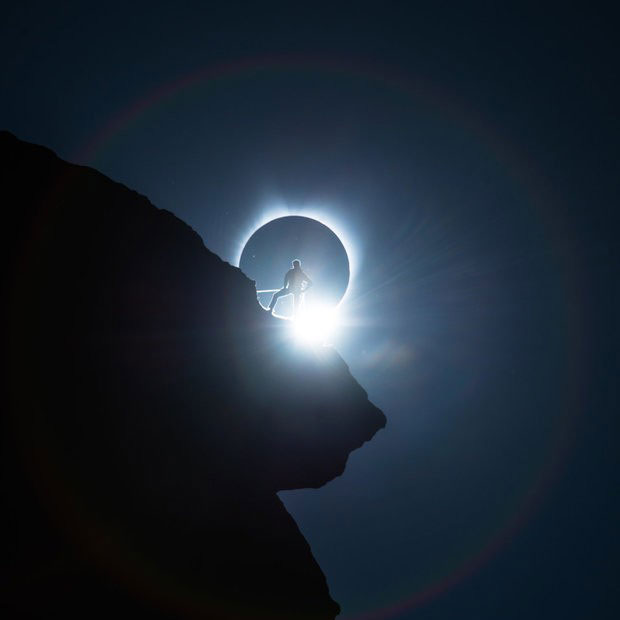 Ted Hesser's viral photograph from Smith Rock State Park during the 2017 total solar eclipse. View the video story about the team of photographers and climbers that worked to capture this image. |
 |
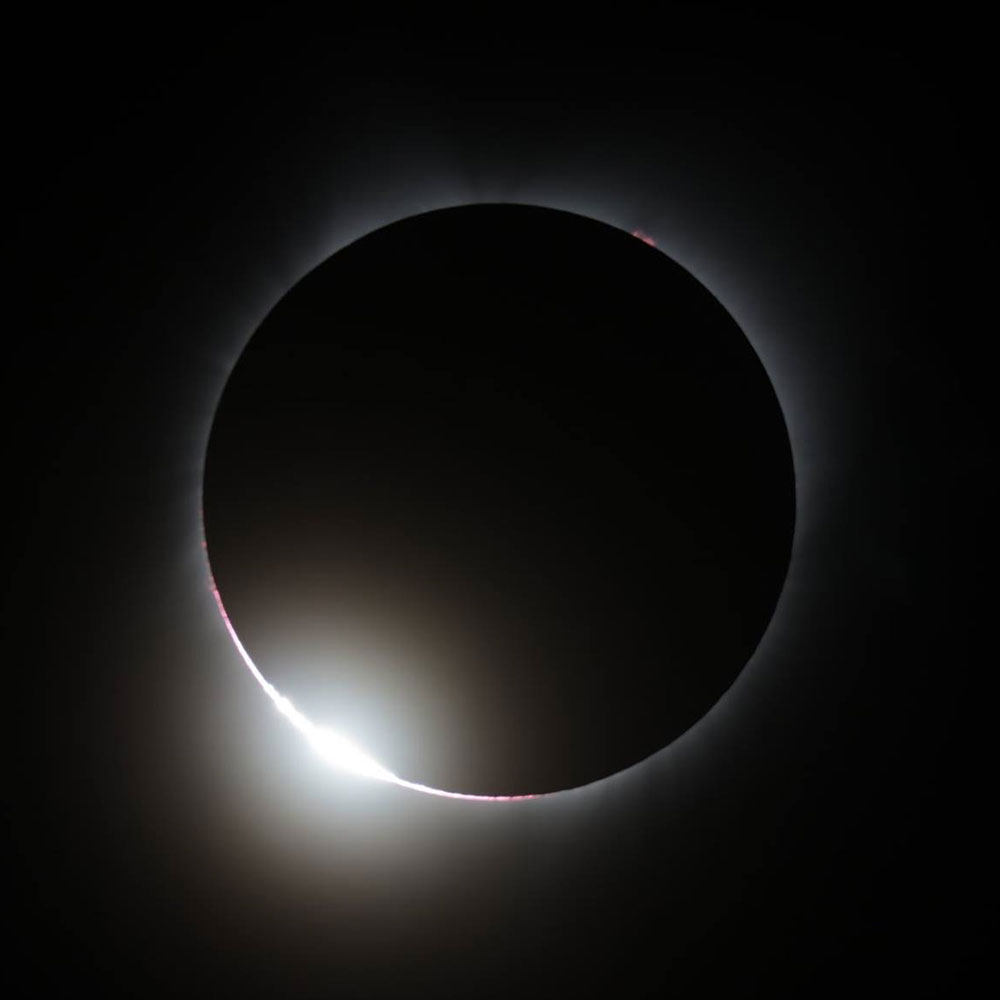 image by Adam Barnes of HMNS |
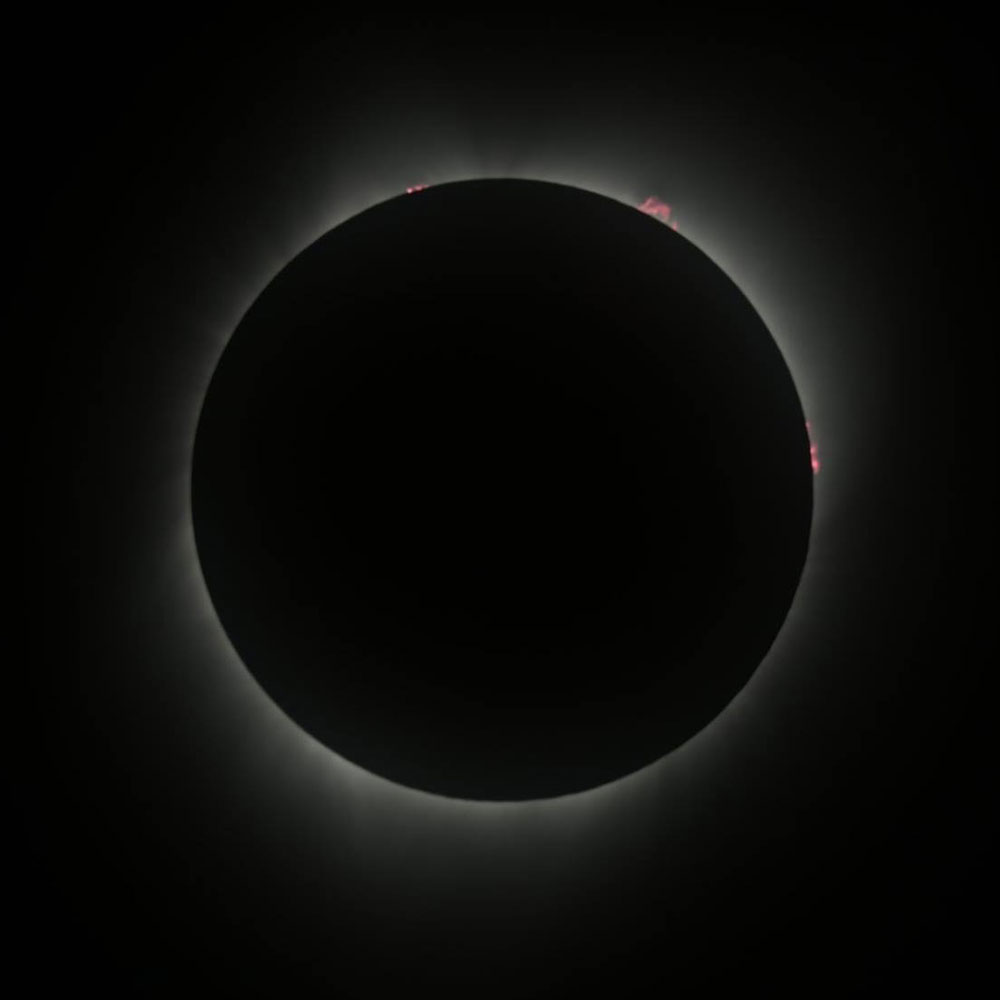 image by Adam Barnes of HMNS |
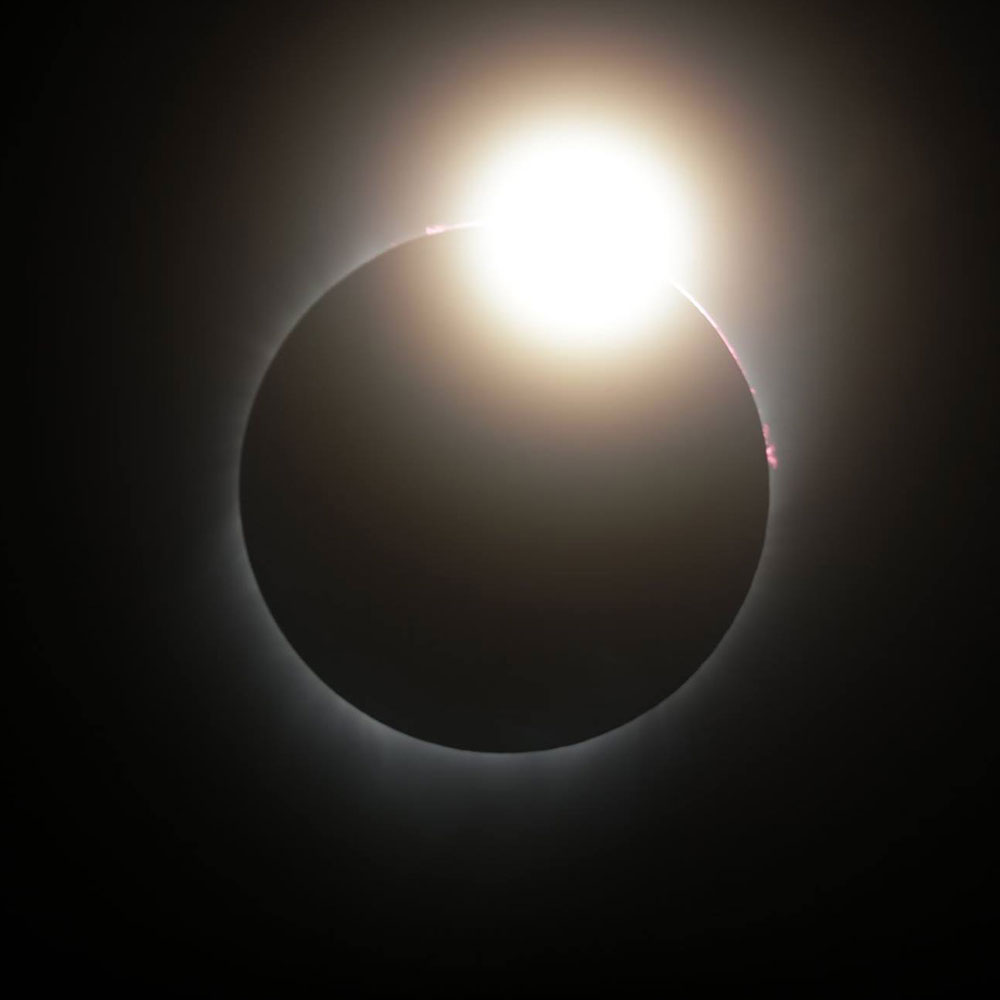 image by Adam Barnes of HMNS |
 Comparison of predicted and actual solar corona during the Aug 21, 2017 eclipse. |
||
Video
Fisheye timelapse of the 2017 total solar eclipse taken from overlook near Dubois, Wyoming. Google group doing full-sphere filming is near 2 o’clock. One frame per 0.5 sec © Patricia Reiff |
NASA's Solar Dynamics Observatory's view of the Aug. 21, 2017, Solar Eclipse. |
One of the best vantage points for today’s total solar eclipse is out of this world — literally. Scientists at UW–Madison’s Space Science and Engineering Center (SSEC) observed the eclipse through the eye of one of the world’s most advanced weather satellites, GOES-16. The eclipse images from the satellite were taken at a rate of one every five minutes. Stitched together, the images show the shadow of the moon tracking west to east across the continental United States. |
